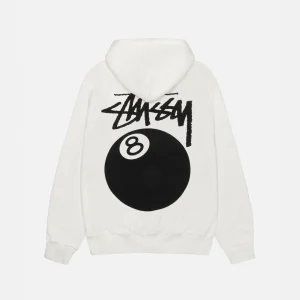Introduction: The Birth of Stüssy
Stussy The Streatwear Fashion. Stüssy is one of the most influential brands in streetwear, a label that not only helped define the genre but also revolutionized the way people thought about fashion, subculture, and identity. Founded in 1980 by Shawn Stüssy, a California-based surfer, the brand started as a small, surf-centric label but quickly transcended its roots. Stüssy’s iconic script logo, a mix of hand-drawn surf graffiti and punk attitude, became synonymous with counterculture cool. Over the last four decades, the brand has continued to thrive by embracing street culture’s constantly shifting landscapes, including skate, punk, hip-hop, and graffiti art.
The Origins of Stüssy: From Surfboards to Streetwear
1. Shawn Stüssy’s Vision
Shawn Stüssy started shaping surfboards in Laguna Beach, California, during the late 1970s, customizing each board with his now-iconic hand-drawn signature. As his surfboards gained popularity, Shawn began screen-printing his logo onto T-shirts and selling them along the beach. The simple, playful graphics quickly caught on among surfers and skaters alike, becoming an instant hit in the Southern California scene.
It wasn’t just surfers who resonated with Stüssy’s early designs https://officialsstussyshop.com/ . By the mid-1980s, the brand began to expand beyond the surf scene, tapping into urban street culture in cities like New York, London, and Tokyo. Shawn’s effortless fusion of surf, skate, punk, and hip-hop styles made Stüssy an early pioneer of what would later be known as “streetwear.” Stussy The Streatwear Fashion
2. The Expansion into Streetwear
What set Stüssy apart from other surf brands of the time was its ability to appeal to a wider audience. Stüssy didn’t just sell clothing—it sold a lifestyle. The brand’s mix of relaxed fits, bold graphic tees, and athletic-inspired wear attracted a broad demographic, from skateboarders to breakdancers. As Stüssy made its way into urban areas, it became more than just a surf brand—it became a symbol of counterculture and rebellion, aligning itself with the anti-establishment ethos of street culture.
The rise of hip-hop in the 1980s also helped propel Stüssy into new markets. As rap music and breakdancing gained popularity, Stüssy’s bold designs resonated with a new generation of artists and fans. By the end of the decade, Stüssy had become a staple in the wardrobes of not just surfers and skaters but also the growing hip-hop community.
The Stüssy Aesthetic: A Blend of Cultures
1. The Iconic Script Logo
One of the most recognizable elements of Stüssy’s design is its iconic signature logo. The graffiti-inspired, hand-scrawled font gave the brand a raw, DIY aesthetic that appealed to rebellious youth. This simple logo quickly became a symbol of authenticity, creativity, and individuality, standing out in a crowded marketplace where polished, corporate designs dominated. Stussy The Streatwear Fashion
The logo’s versatility made it a perfect canvas for countless design iterations, allowing it to be featured on everything from caps to jackets to accessories. Today, the logo remains largely unchanged, a testament to its timeless appeal and enduring relevance.
2. The Influence of Subcultures
Stüssy’s aesthetic has always been a melting pot of different cultural influences. From its surf-inspired beginnings to its eventual embrace of hip-hop, skateboarding, and punk, the brand’s ability to pull from a variety of subcultures has been key to its longevity. This fusion of influences is evident in the way Stüssy blends laid-back, Californian beachwear with street-smart, urban fashion.
The brand’s collections often include oversized silhouettes, bold prints, and retro-inspired designs. Stüssy’s ability to adapt while maintaining a distinct identity has allowed it to stay relevant over the years, even as fashion trends come and go. The brand’s signature look is one of casual cool, a style that is at once familiar and forward-thinking.
3. Collaborations and Artist Partnerships
Another hallmark of the Stüssy aesthetic is its long history of collaborations. Over the years, the brand has teamed up with an impressive roster of artists, designers, and other brands, pushing the boundaries of streetwear. Collaborations with Nike, Supreme, BAPE, and more have not only expanded Stüssy’s reach but also solidified its place as a tastemaker in the fashion world.
These collaborations are often limited in release, generating hype and excitement among fans and collectors. Stüssy’s collaborations frequently incorporate elements of art, music, and design, ensuring that the brand stays at the forefront of cultural conversations.
The Stüssy Tribe: Building a Global Community
1. The Stüssy International Tribe
In the late 1980s, Stüssy began cultivating what would become one of its most enduring legacies: the Stüssy International Tribe. This was a group of influencers, DJs, musicians, and artists who represented the brand in major cities around the world, from New York to Tokyo to London. The tribe members acted as ambassadors for the brand, spreading the Stüssy ethos through their respective cultural scenes. Stussy The Streatwear Fashion
The International Tribe was more than just a marketing gimmick—it was a reflection of Stüssy’s commitment to building a global community around street culture. Tribe members like DJ Hiroshi Fujiwara, James Jebbia (founder of Supreme), and Alex Turnbull were tastemakers who helped elevate Stüssy from a local surf brand to a global cultural force. The tribe played a crucial role in establishing the brand’s presence in Japan and Europe, where streetwear was just beginning to take off.
2. A Global Streetwear Icon
By the early 1990s, Stüssy had firmly established itself as one of the leading streetwear brands worldwide. The brand’s appeal was no longer confined to any one subculture or region—Stüssy had become a global icon. From high-end boutiques in Tokyo to street markets in London, Stüssy’s distinctive aesthetic resonated with a diverse audience.
The brand’s international expansion was fueled by its ability to adapt to different cultural contexts while maintaining its core identity. Whether it was through collaborations with Japanese designers or limited-edition drops in New York, Stüssy managed to stay relevant and desirable to a global fanbase.
Stüssy’s Enduring Influence on Streetwear Culture
1. Paving the Way for Future Streetwear Brands
Stüssy is often credited as one of the pioneers of modern streetwear. Its success laid the groundwork for countless other brands that followed in its footsteps, from Supreme to Palace to Off-White. The concept of blending high fashion with street culture, now a cornerstone of the streetwear industry, was first popularized by Stüssy in the 1980s and 1990s.
The brand’s DIY ethos, combined with its ability to fuse different cultural influences, set a precedent for the streetwear brands that came after it. Stüssy showed that streetwear could be more than just a fashion trend—it could be a cultural movement.
2. The Power of Limited Drops
One of the key strategies that helped Stüssy maintain its allure was the concept of limited drops. By releasing small, exclusive batches of products, the brand created a sense of urgency and desirability around its collections. This strategy, now a standard practice in streetwear, helped build hype around each new release and made Stüssy’s products highly sought-after by collectors. Limited drops also allowed the brand to stay nimble and responsive to cultural trends.
The Modern Evolution of Stüssy: Staying Relevant in a Changing World
1. Reaching a New Generation
As streetwear has evolved, so has Stüssy. The brand continues to appeal to a new generation of fashion-conscious consumers, many of whom were not even born when the brand first rose to prominence. Stüssy’s ability to remain relevant is due in large part to its willingness to evolve with the times. While the brand’s core identity remains intact, its designs have become more refined, incorporating contemporary trends while still staying true to its roots. Stüssy’s digital presence, particularly on platforms like Instagram, has helped introduce the brand to a younger audience.
2. Sustainability and Ethical Production
As the fashion industry faces increasing pressure to adopt more sustainable practices, Stüssy has taken steps to address these concerns. The brand has made efforts to incorporate more sustainable materials into its collections and has partnered with factories that prioritize ethical production standards. While streetwear has traditionally been criticized for its focus on consumerism and fast fashion, brands like Stüssy are working to balance style with sustainability. Stussy The Streatwear Fashion
Conclusion: Stüssy’s Lasting Legacy
Stüssy is more than just a streetwear brand—it is a cultural icon that has shaped. The way we think about fashion, identity, and community. From its humble beginnings in Laguna Beach to its status as a global streetwear powerhouse. Stüssy has remained at the forefront of street culture for over 40 years. The brand’s ability to blend different subcultures, collaborate with a diverse range of artists. And build a global community has cemented its place as one of the most influential brands in streetwear history. Stussy The Streatwear Fashion.
Visit: https://businessguruzz.com/




